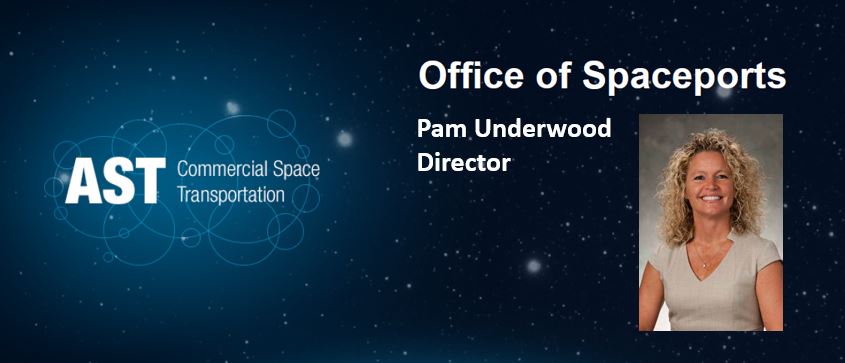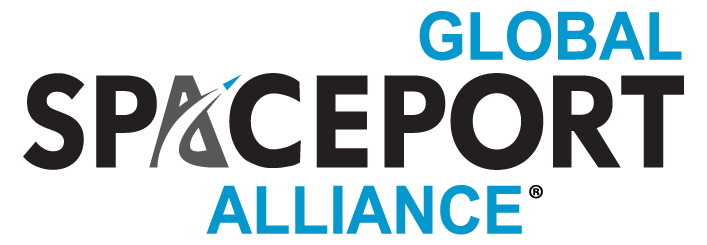
During an April 29th meeting of the GSA membership, Pam Underwood, Director of the FAA Office of Spaceports, briefed the group on the reorganization of FAA-AST and the creation of her newly established office and its initial focus areas. Throughout her talk, Underwood expressed her desire to work with GSA and its member spaceports and associates to achieve sound policies that support the global spaceport community.
As a result of the reorganization under the leadership of Wayne Monteith, Underwood reported that FAA-AST is divided into two main functional areas. There is the operations side where licensing activities take place, including the analysis in support of the licensing, and the safety inspection activities that support the operations that have been approved. The other side of the organization focuses more on policy matters and includes the Office of Spaceports. In reorganizing FAA-AST, Underwood said it was “really important to make sure that we are as efficient as we can be to meet the needs of the growing industry.”
She then reviewed the FAA Reauthorization Act of 2018 (§ 51501), which gives specific requirements for the new Office of Spaceports, including that the office:
- support licensing activities for operation of launch and reentry sites;
- develop policies that promote infrastructure improvements at spaceports;
- provide technical assistance and guidance to spaceports;
- promote United States spaceports within the Department; and
- strengthen the Nation’s competitiveness in commercial space transportation infrastructure and increase resilience for the Federal Government and commercial customers.
To meet these requirements, the office will engage in a series of initial focus areas. First, it will support the U.S. Space Force with transitioning of Eastern and Western ranges to a commercial management model. Underwood said that she “wants to make sure that the transition is done in a manner that will provide some continuity and some help to the industry.”
Another focus is developing an internal plan for a future FAA/DOT spaceport infrastructure grant program. Underwood admitted that while her office will not have control of when the grant program will be funded, she wanted to ensure that the office was ready to go when funds are available. She is eager for input from GSA and its members in identifying industry infrastructure needs.
While the immediate priority will be U.S. spaceports, Underwood is actively engaging international spaceports as well. “It would be very short sighted if our office of spaceports did not consider that global engagement,” she said. “The United States has been one of the first countries to have regulations on the books and it’s a very exciting time to be able to work with other countries as they develop their own.”
Her office will also be looking at modernizing the regulations of U.S. launch and reentry sites. “Much like what we’ve done now with our streamlining of our launch and reentry licensing, we need to take on an effort similar to that with spaceports and how we license and regulate spaceport launch and reentry sites.”
And finally, Underwood said, “it’s really important for this office to be an advocate for promoting the capabilities and needs of the nation’s network of spaceports.”
In response to a question, Underwood reported that the spaceport policy report as mandated by Congress has been finished and is currently under coordination and review with the OMB and other offices. Unfortunately, the COVID19 crisis has thrown off any prediction of when the report may be released.
Pam Underwood Biography
Pam Underwood is the Director of the Office of Spaceports in the FAA Office of Commercial Space Transportation. Her office is responsible for strengthening the Nation’s competitiveness in commercial space transportation infrastructure and increasing their resilience for the Federal Government and commercial customers. Her office develops policies that promote infrastructure improvements at spaceports, supports licensing activities for operation of launch and reentry sites, and provides technical assistance and guidance to spaceports. She is also responsible for promoting United States spaceports within the Department of Transportation.
She has been with the FAA Office of Commercial Space Transportation for approximately 14 years, and has over 20 years of aerospace experience in both private industry and government applications. Prior to joining the FAA she was a Solid Rocket Booster Integration Engineer for United Space Alliance working with the NASA space shuttle program, a Wind Tunnel Test Engineer at the National Transonic Facility at NASA Langley Research Center, and an Instrumentation Engineer for Pratt & Whitney in their Large Military Engines Division. She earned a B.S. degree in Aerospace Engineering from Embry-Riddle Aeronautical University, and M.S. degree in Aerospace Engineering from Virginia Tech.

